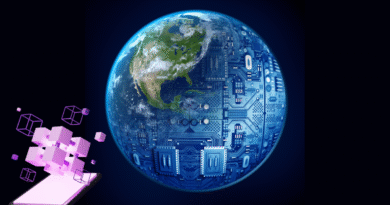India Is Now Excited To Launch Its First Hydrogen Train
By Wilfred Melwyn | September 2025 Edition | Science & Technology
Green Hydrogen and India’s Hydrogen-Powered Trains: A Path to Clean Mobility
The Indian Railways, one of the largest and busiest networks in the world, is preparing for a transformation that could alter the very foundations of how people and goods move across the subcontinent. The recent trial of a hydrogen-powered coach marked an important milestone, not just for the future of the railways but also for India’s long-term climate commitments. With ambitions to achieve net-zero carbon emissions by 2070, the railways’ hydrogen initiative is emerging as a decisive step in reshaping transport for a decarbonised era.
Hydrogen trains may seem futuristic, but they address a simple truth: the need to find cleaner, practical, and scalable solutions for India’s vast mobility requirements. While electric trains dominate many mainline routes, millions of kilometres remain dependent on diesel. Hydrogen fuel cell technology presents itself as a bridge between efficiency, sustainability, and flexibility.
Why Hydrogen Trains Matter
Traditional diesel-electric locomotives are reliable but carbon-intensive. Hydrogen trains, on the other hand, run on electricity generated from onboard fuel cells, where compressed hydrogen reacts with oxygen from the air in an electrochemical process. The reaction produces electricity to power the train and emits nothing but water vapour.
This design allows hydrogen trains to operate without overhead electric wires, making them highly suitable for routes where electrification is too costly, geographically challenging, or prone to weather-related damage. For India, where thousands of kilometres of track cut through mountains, forests, and flood-prone regions, this flexibility is invaluable.
Other advantages include reduced air pollution since there is no smoke from combustion, quieter operation due to the absence of diesel engines, and the ability to use regenerative braking. In regenerative systems, the kinetic energy released while braking is captured and stored in onboard batteries, improving efficiency.
Perhaps most importantly, hydrogen trains can be refuelled in just 20–25 minutes, keeping turnaround times competitive with diesel engines and making them operationally feasible for busy passenger and freight corridors.
The Costs and the Rollout Plan
Following the successful trial of a 1,200 HP hydrogen-powered coach in Chennai, the Indian Railways has already set its eyes on a larger rollout. The plan includes 35 hydrogen trains, each costing about ₹80 crore. An additional ₹70 crore will be invested in building the necessary refuelling and safety infrastructure along designated routes.
The first commercial deployment will take place on the Jind–Sonipat corridor in Northern Railway, spanning 356 kilometres. Two daily round trips on this stretch will serve as a live testing ground to evaluate performance, efficiency, fuel economy, and passenger response.
Engineering and retrofitting work for the hydrogen trains will be handled at the Integral Coach Factory (ICF) in Chennai, with Medha Servo Drives responsible for the advanced technology integration. Each train will carry hydrogen fuel engines at both ends, flanked by eight conventional coaches in between, with a capacity to seat more than 2,600 passengers.
This model demonstrates how India plans to scale hydrogen solutions step by step: starting with a limited number of trains, fine-tuning efficiency, and then gradually expanding into wider networks.
What Exactly Is Green Hydrogen?
At the heart of this shift lies green hydrogen — the fuel that powers these new trains.
Green hydrogen is produced by splitting water (H₂O) into hydrogen (H₂) and oxygen (O₂) through electrolysis, using electricity generated entirely from renewable sources like solar, wind, or hydropower. Since the process relies only on renewables, it does not release any greenhouse gases, unlike grey or blue hydrogen derived from fossil fuels.
This makes green hydrogen a zero-emission fuel and an ideal alternative for industries and transport systems looking to reduce their environmental impact. The only by-product when hydrogen is used as fuel is water vapour, leaving no harmful residues.
How Green Hydrogen Is Produced
- Electricity from Renewable Sources
Solar panels, wind turbines, or hydroelectric plants provide clean electricity to power the process. - Electrolysis
The electricity runs through an electrolyser that splits water into hydrogen and oxygen molecules. - Collection and Storage
The hydrogen gas is captured, stored in pressurised tanks, and later transported for industrial or transport applications. - Use as Fuel
When used in a fuel cell, the hydrogen recombines with oxygen to produce electricity, with water vapour as the only emission.
Why Green Hydrogen Matters
- Decarbonising Heavy Sectors: It can replace fossil fuels in industries like steel, cement, fertilisers, and chemicals, where emissions are otherwise hard to control.
- Sustainable Energy Carrier: Hydrogen allows renewable power to be stored and transported easily, smoothing out supply fluctuations from solar or wind.
- Energy Security: By investing in domestic hydrogen production, countries like India can reduce dependence on imported fossil fuels.
- Net-Zero Roadmap: Green hydrogen plays a crucial role in helping India and the world reach climate goals while fuelling economic growth.
India’s Position in the Global Hydrogen Race
Globally, hydrogen has become a strategic frontier in the clean energy race. Countries like Germany, Japan, and South Korea are already running hydrogen-powered trains and buses. The European Union has laid down frameworks to expand hydrogen corridors, while China is investing heavily in hydrogen-powered heavy trucks and industrial uses.
India has chosen the railways as its testing ground, but the broader National Green Hydrogen Mission, launched in 2023, reflects ambitions beyond trains. The mission targets production of 5 million metric tonnes of green hydrogen annually by 2030, supported by dedicated hydrogen hubs, industrial adoption, and export opportunities.
The synergy between this national plan and Indian Railways’ experiments is vital. Trains not only consume significant amounts of fossil fuels but also offer a highly visible public platform for green technologies. If hydrogen trains succeed, it could accelerate public confidence and investment in other hydrogen-based solutions.
Challenges That Need Addressing
Despite the promise, hydrogen technology is not without hurdles.
- High Costs: At present, hydrogen trains cost significantly more to build than conventional diesel or electric trains. The price of producing green hydrogen is also higher than fossil alternatives.
- Infrastructure Gaps: Setting up safe hydrogen refuelling stations across India’s vast network will require billions in investment.
- Safety Concerns: Hydrogen is highly flammable and requires strict safety standards in storage, transport, and usage.
- Efficiency Questions: While green hydrogen is clean, the electrolysis process consumes large amounts of electricity, raising concerns about scalability until renewable energy capacity is further expanded.
Still, technology costs tend to fall rapidly once scaled, as seen with solar and wind. India is betting that early adoption and local innovation will bring costs down over the next decade.
How a hydrogen train actually works
Think of the train as an electric multiple unit that carries its own power plant. Compressed hydrogen gas is stored on board in certified tanks, typically around 350 bar in rail applications. The fuel passes through proton exchange membrane fuel cells that combine hydrogen with oxygen from the air to produce electricity and water vapour. Power electronics feed traction motors and charge a high-capacity lithium battery that smooths load, supports acceleration, and captures braking energy through regenerative braking. The only exhaust is water.
One overlooked advantage is turnaround time. Where a battery-electric train can require hours to recharge at scale, mature hydrogen fleets in Europe demonstrate refuelling cycles in roughly 15 to 20 minutes, similar to diesel pit stops. That keeps diagrams tight and utilisation high, a crucial factor for Indian suburban and inter-urban patterns.
Another benefit is route flexibility. Fuel-cell electric trains can run seamlessly on non-electrified lines and through sections where catenary is vulnerable to wind, heat, salt or vandalism. That makes hydrogen a sensible option for gaps, branches and heritage routes where full electrification is costly or slow to justify. Reviews of technology performance also point to competitive life-cycle emissions when green hydrogen is used and to refuelling logistics that can be co-located with depots and yards.
Looking Ahead: The Broader Implications
If successful, hydrogen trains will be more than just an experiment — they will mark the beginning of a hydrogen economy in India. They will show how clean technologies can be integrated into legacy systems without completely overhauling infrastructure.
For the Indian diaspora watching from across the world, this project reflects the country’s determination to match global trends in clean energy while addressing domestic challenges. It also opens opportunities for Indian-origin innovators, investors, and engineers abroad to contribute expertise to India’s hydrogen journey.
Green hydrogen offers more than a new way to run trains — it offers a chance to redefine mobility and industrial growth in a climate-conscious way. For the Indian Railways, it means cleaner tracks, less pollution, and progress towards its 2070 net-zero target. For India, it represents energy independence, technological leadership, and a role in shaping the global clean energy transition.
The 35 planned hydrogen trains may be only the first step, but they are a clear signal that India is willing to invest in bold, future-ready solutions. Whether it is on a busy corridor in Haryana or on global climate negotiation tables, green hydrogen is set to become one of the most powerful symbols of India’s sustainable future.
© The WFY Magazine | Wilfred Melwyn: The WFY Bureau Desk |
Disclaimer: This article has been prepared for informational and educational purposes. It is based on publicly available data and independent analysis. It does not contain authorised quotes from individuals or organisations. While every effort has been made to ensure factual accuracy, readers are advised to verify figures and consult official updates for policy details.




